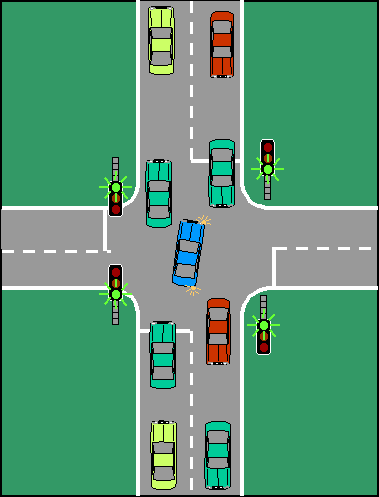TRANSYT 16, TRANSYT 15 and TRANSYT 14:
These versions of TRANSYT allow a full intergreen matrix, and phase delays to be specified, so that start and end lags are no longer required. Early phase starts are now represented using these features, in a more intuitive and conventional traffic engineering way.
There are also various options available to make modelling adjustments to green times when necessary, either on a phase or directly on traffic streams and links. For example, in TRANSYT 16.1.4 onwards you can add traffic stream “green start adjustments” and “green end adjustments”. These adjustments have a variety of uses.
TRANSYT 13 and earlier:
With normal data, the minimum possible intergreen time would be 1 second. Should an intergreen time of less than 1 second be required, the global start-displacement value can be set to zero and the start-lags for any links starting early can be set as required. If the lowest start lag was used (1 second), it would, in effect, give an intergreen of minus 1 second (see diagram) because the effective green and real green are starting at the same time; normally the effective green (as determined by the global start-displacement value). Remember that, if doing this, all the link start-lags have to be set to account for the fact that the start-displacement is now zero rather than 2; normally this would mean adding 2 seconds to start lags. Also remember that real green times would start earlier than TRANSYT says they do. (see ’TRANSYT greens’ in the diagram.
(Updated 2023)
